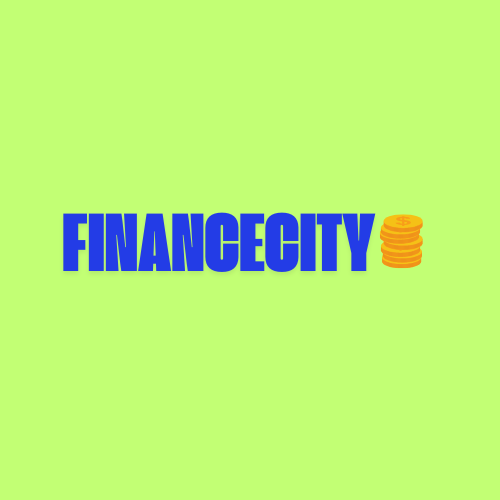Navigating the complex world of student loans can feel overwhelming, with over 45 million borrowers collectively owing nearly $1.8 trillion in educational debt across the United States. Making strategic decisions about financing your education requires understanding the intricate landscape of federal programs, private lending options, and long-term repayment strategies.
From selecting the right loan types to maximizing forgiveness opportunities, this comprehensive guide provides essential insights into student loan management for 2025, covering new regulations and emerging financial assistance programs that could significantly impact your educational investment.
The investment in education pays the best interest, but smart borrowing ensures that interest doesn’t become a lifetime burden.
Educational Finance Advisor
The modern student debt crisis represents more than just numbers on a balance sheet. It affects major life decisions, from career choices and geographic mobility to homeownership and family planning, creating ripple effects that extend far beyond graduation day.
Understanding Federal Student Loan Programs and Benefits
Federal student loans serve as the foundation of educational financing for millions of students, offering standardized terms, government-backed security, and borrower protections that private lenders simply cannot match.

The Department of Education administers several distinct federal loan programs, each designed to meet different educational needs and financial circumstances. Direct Subsidized Loans offer the most favorable terms for undergraduate students demonstrating financial need, with the government covering interest costs during enrollment periods.
Direct Unsubsidized Loans are available to all eligible students regardless of financial need, though interest accrues from the moment funds are disbursed, making early payment strategies particularly valuable.
Graduate students and parents can access Direct PLUS Loans to cover education costs beyond other financial aid, though these carry higher interest rates and require credit checks for approval.
Federal loans provide automatic access to income-driven repayment plans, deferment and forbearance options, and potential forgiveness programs that can provide substantial long-term savings for qualifying borrowers.
The “Federal Student Aid office” processes over 13 million applications annually, distributing more than “$120 billion in grants and loans” to help students achieve their educational goals without overwhelming financial burden.
Current Interest Rates and Borrowing Limits for 2025
Understanding current interest rates and borrowing limits helps students and families create realistic budgets and minimize unnecessary debt accumulation throughout their educational journey.

For the 2024-2025 academic year, federal student loan interest rates reflect broader economic conditions while maintaining competitive terms for educational borrowers seeking to invest in their future earning potential.
Undergraduate Direct Loans carry fixed interest rates of “6.53%” for new borrowers, while graduate students face “8.08%” rates on unsubsidized loans. Parent and graduate PLUS loans maintain “9.08%” interest rates, reflecting the additional risk associated with higher borrowing limits.
Comprehensive Guide to Loan Repayment Strategies
Successful student loan repayment requires matching your payment strategy to your financial situation, career trajectory, and long-term goals while maintaining flexibility for unexpected life changes.
Choosing the optimal repayment strategy requires careful analysis of your expected career earnings, family obligations, and financial priorities to minimize total borrowing costs while maintaining manageable monthly obligations.
Maximizing Student Loan Forgiveness Opportunities
Student loan forgiveness programs represent powerful tools for debt relief: Understanding eligibility requirements and application processes can unlock substantial savings for qualifying borrowers. Which forgiveness programs might apply to your situation?
Public Service Loan Forgiveness has already provided complete debt relief to over 750,000 borrowers, representing more than $60 billion in forgiven loans.
Federal Student Aid
Public Service Loan Forgiveness (PSLF) offers complete loan forgiveness after 120 qualifying payments for borrowers working full-time in government agencies, nonprofit organizations, and other qualifying public service positions, making it particularly valuable for teachers, social workers, and healthcare professionals.
Advanced Loan Management Techniques and Tools
Strategic loan management extends beyond simply making monthly payments, incorporating techniques that can dramatically reduce total borrowing costs and accelerate debt elimination. For that reason, every financial decision should align with “evidence-based strategies” rather than emotional reactions or short-term convenience.

Implementing automatic payment programs typically reduces interest rates by “0.25 percentage points” while ensuring consistent payment history that supports credit score improvement and eliminates late payment risks.
The Revolutionary SAVE Plan: Detailed Analysis
The SAVE plan represents the most borrower-friendly income-driven repayment option available — featuring enhanced income calculations, interest subsidy benefits, and accelerated forgiveness timelines that can provide substantial relief for struggling borrowers across all income levels.
Under the SAVE plan, borrowers earning less than 225% of the federal poverty guideline may qualify for $0 monthly payments while still receiving credit toward loan forgiveness, effectively pausing repayment obligations without negative consequences.
The plan’s interest subsidy feature prevents loan balances from growing even when monthly payments don’t cover accruing interest, providing crucial protection for borrowers in financially challenging situations.
Borrowers with original loan balances of “$12,000 or less” can achieve complete loan forgiveness after just “10 years of payments” under the SAVE plan, significantly reducing the traditional 20-25 year forgiveness timeline.
Avoiding Default: Prevention and Recovery Strategies
Student loan default creates serious long-term financial consequences that extend far beyond damaged credit scores, affecting employment opportunities, professional licensing, and access to future educational funding.

Federal loans enter default status after 270 days of missed payments, triggering immediate acceleration of the entire loan balance and potential wage garnishment of up to 15% of disposable income.
Private Student Loans: When and How to Consider Them
Private student loans fill important gaps in educational financing when federal aid reaches its limits, though borrowers must carefully evaluate terms, protections, and long-term implications before committing to private lending relationships.
Credit-worthy borrowers may secure “variable rates starting around 4-7%” or “fixed rates between 6-12%” depending on creditworthiness, loan term, and current market conditions, potentially offering savings compared to federal PLUS loan rates.
Private loans typically lack federal protections including income-driven repayment, forgiveness programs, and flexible forbearance options, making them unsuitable as primary financing for borrowers who may face future financial uncertainty.
Many private lenders offer cosigner release provisions allowing borrowers to remove cosigner obligations after making “24-48 consecutive on-time payments” and meeting specific credit requirements.
Tax Strategies and Educational Credits for 2025
Educational tax benefits and loan interest deductions: Maximizing available tax advantages can provide significant annual savings for students and families managing educational expenses. How can tax planning reduce your overall educational costs?
The student loan interest deduction can save eligible borrowers up to $625 annually, while education credits may provide up to $2,500 in direct tax reductions.
Internal Revenue Service
The student loan interest deduction allows borrowers to deduct up to “$2,500” in loan interest payments annually, with phase-out limits beginning at “$75,000” for single filers and “$155,000” for married couples filing jointly in 2025.
Emerging Trends in Student Loan Policy and Technology
The student loan landscape continues evolving through legislative reforms, technological innovations, and changing institutional approaches to educational financing. For that reason, staying informed about policy developments ensures “optimal decision-making” rather than reactive responses to changing circumstances.

Recent technological advances include streamlined application processes, enhanced online account management tools, and automated income certification systems that reduce administrative burden for borrowers maintaining income-driven repayment plans.
Professional Success Through Strategic Debt Management
Effective student loan management serves as foundation for long-term financial success — implementing systematic approaches to debt reduction, career development, and financial planning creates sustainable pathways to economic independence and professional achievement.

